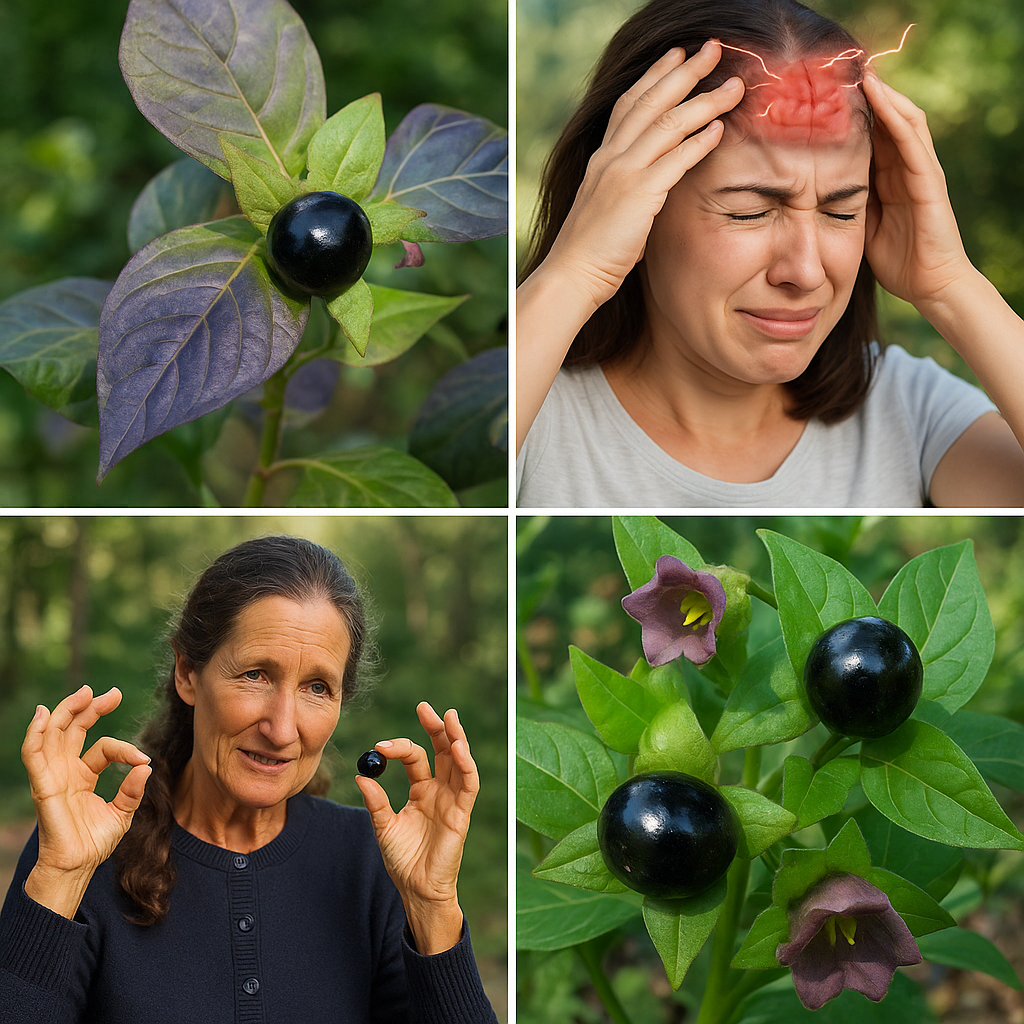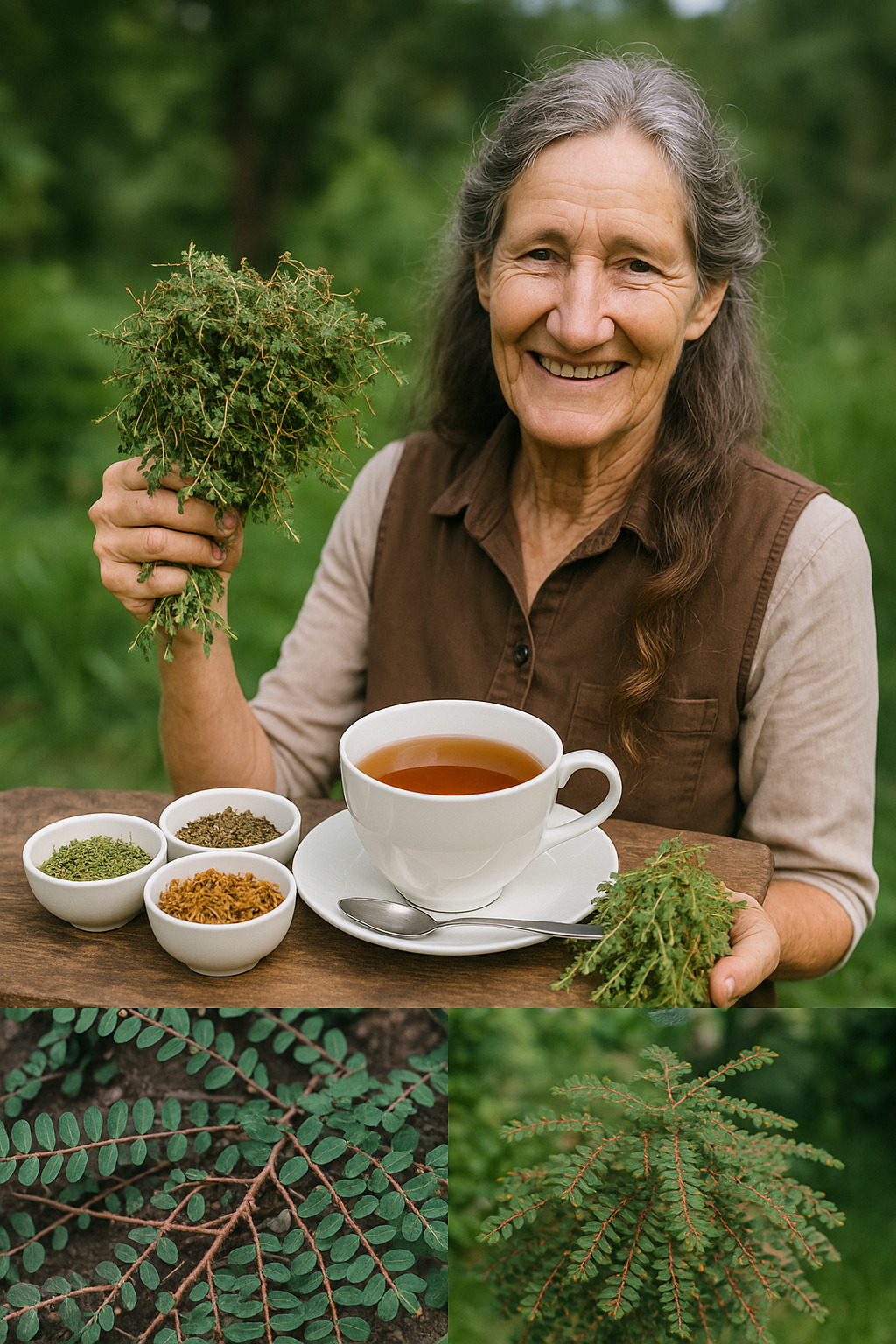✨ With its dark berries, seductive purple flowers, and shadowy folklore, Deadly Nightshade is one of the most enchanting yet feared plants in the natural world. Known scientifically as Atropa belladonna, this elegant but lethal herb has captivated alchemists, healers, and historians for centuries. While it harbors powerful medicinal properties, its reputation as a toxic plant steeped in myth and death has never faded.
From ancient assassins to medieval witches and modern medicine cabinets, this plant’s story is as chilling as it is fascinating. If you’ve ever wondered how something so beautiful could be so dangerous, prepare to enter the world of Deadly Nightshade — a botanical paradox that demands both awe and caution.

🌿 What Is Deadly Nightshade?
Deadly Nightshade belongs to the Solanaceae family, which includes tomatoes, potatoes, and eggplants. Native to Europe, North Africa, and Western Asia, it’s a perennial herb that can grow up to six feet tall. Its bell-shaped purple flowers, lush dark green leaves, and glossy black berries make it unmistakably beautiful — and fatally deceptive.
Every part of the plant, from root to berry, contains toxic alkaloids capable of disrupting the nervous system. These chemical compounds make it one of the most dangerous plants on Earth.
☠️ The Toxic Compounds Inside Atropa belladonna
What makes Deadly Nightshade so deadly? The answer lies in three powerful alkaloids that wreak havoc on the nervous system:
🧪 Atropine – A compound that interferes with the body’s ability to regulate muscles and glands, leading to symptoms like dry mouth, racing heart, hallucinations, and paralysis.
🧪 Scopolamine – Known for its mind-altering effects, it can induce confusion, dizziness, memory loss, and even a dreamlike trance. In high doses, it can cause death.
🧪 Hyoscyamine – A neurotoxic compound that disrupts communication between nerves and muscles, often resulting in convulsions, respiratory distress, or coma.
These substances act as anticholinergics, meaning they block key neurotransmitters, leading to a wide range of symptoms — from mild to fatal — in a matter of minutes.
📜 A Haunting History: Nightshade Through the Ages
Deadly Nightshade has left its mark across centuries of history, both feared and revered for its dual identity as a poison and a medicine.
🏛️ Ancient Assassinations
In Roman times, it was a favorite weapon of political poisoners. Extracts from the plant were smeared onto arrows or slipped into drinks, delivering a silent but deadly end to enemies.
🧹 Medieval Magic and Witchcraft
Witches in the Middle Ages were said to use belladonna in potions and flying ointments. These hallucinogenic brews were believed to induce visions, trance states, or even astral travel. The plant became synonymous with dark arts and supernatural rituals.
💋 Renaissance Beauty
Its name “belladonna” means “beautiful woman” in Italian — a nod to the dangerous beauty practices of the Renaissance. Women used drops made from the plant to dilate their pupils, giving their eyes a wide and luminous appearance. While seductive, the long-term effects were often disastrous, causing blindness and damage to the optic nerve.
💊 Modern Medicine’s Paradox
Despite its terrifying toxicity, modern pharmacology has harnessed Deadly Nightshade in powerful ways. When used in carefully measured doses under medical supervision, its compounds have legitimate clinical applications:
– Atropine is used in ophthalmology to dilate pupils during eye exams
– Scopolamine is prescribed for motion sickness and postoperative nausea
– Belladonna extracts help manage muscle spasms and overactive bladder
– Atropine injections serve as emergency treatments for nerve gas poisoning
These medical uses demonstrate how a plant so lethal can also be life-saving — if handled with precision and expertise.
🧬 Symptoms of Deadly Nightshade Poisoning
Accidental ingestion of even a few berries can result in serious symptoms. Here’s what happens when someone is poisoned:
😵 Mild to Moderate Effects
– Dilated pupils
– Dry mouth
– Blurred vision
– Rapid heartbeat
– Dizziness
– Hallucinations
⚠️ Severe to Fatal Effects
– Delirium
– Convulsions
– Paralysis
– Coma
– Respiratory failure
– Death
Children are especially vulnerable, as the berries look harmless and sweet. Ingesting just a few can be fatal.

🐾 Who Is Most at Risk?
🚸 Children – Attracted by the shiny black berries, they are the most common victims of accidental poisoning.
🐕 Pets and Livestock – Animals that graze in fields or gardens where nightshade grows can fall severely ill or die.
🌿 Herbal Foragers and Gardeners – Without proper plant identification skills, foragers can easily mistake belladonna for edible plants, leading to unintended and deadly consequences.
🌸 How to Identify Deadly Nightshade in the Wild
If you forage or garden, you need to know how to spot it:
– Flowers: Dark purple, bell-shaped, often with greenish edges
– Leaves: Large, oval, and dark green with a smooth texture
– Berries: Shiny, black, and round — about the size of cherries
– Height: Grows up to six feet tall with a bushy, branching form
If you’re unsure, never touch or taste wild plants. The risk isn’t worth it.
🏡 Should You Grow Deadly Nightshade?
While some gardeners are drawn to its exotic appearance, caution is essential:
– Keep the plant away from children and pets
– Never attempt to extract or consume it on your own
– Use gloves when handling, and avoid inhaling or touching your face
– Only grow it under guidance or for educational, ornamental, or scientific purposes
🧠 Final Thoughts: Beauty, Danger, and the Thin Line Between Them
Deadly Nightshade is a paradox — a symbol of natural elegance and biological danger. It has killed, healed, enchanted, and terrified. Its role in history is deeply rooted in folklore, medicine, and myth.
While its compounds continue to serve valuable purposes in controlled medical settings, the plant itself should be respected and handled only by experts. For the average person, curiosity can be dangerous — and the consequences, irreversible.
If you ever encounter Atropa belladonna in the wild, admire it from a distance. Its legacy is a powerful reminder that not all beauty is harmless — and that nature’s most striking creations often carry the deepest caution.


